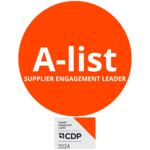Unlocking the sustainable potential of minerals

Key achievements in our sustainability journey



Discover our main priorities for 2025
Launched in 2018, SustainAgility articulates Imerys’ comprehensive approach to doing business in a way that creates positive value for all our stakeholders. It was updated in January 2023 to better reflect their evolving expectations.
Creating sustainable value for our customers

More and more, our customers want the products they buy to be sustainable. We help them by continuously improving our practices to make our products and solutions as sustainable as possible across the value chain. We also provide comprehensive sustainability information about our products so customers can make educated choices when they buy from us.

Lowering our greenhouse gas emissions

Our climate change strategy is aligned with the 1.5°C trajectory. We are taking specific steps to significantly reduce our CO2 emissions by 2030 as well as those along our value chain.

Reducing our environmental footprint

Our activity naturally has an impact on the living world, giving us a major responsibility to treat the environment with care. We are committed to acting as responsible environmental stewards, reducing our consumption of natural resources while respecting the ecosystems in which we operate and working together with scientific experts to preserve and restore biodiversity.

Making sure that every person matters

We have always made people our primary value, prioritizing health and safety, safeguarding human rights and labor practices, nurturing talent, promoting diversity, equity and inclusion, and engaging with local communities.

Ensuring high standards all along the value chain

At Imerys, we follow the most demanding international codes of corporate conduct. We place the values of communication, trust and transparency at the heart of our company culture and relationships.

Recognition of our efforts by rating agencies
We pride ourselves on being best in class in sustainability for the mining sector and our efforts have been recognized by leading sustainability rating agencies.











